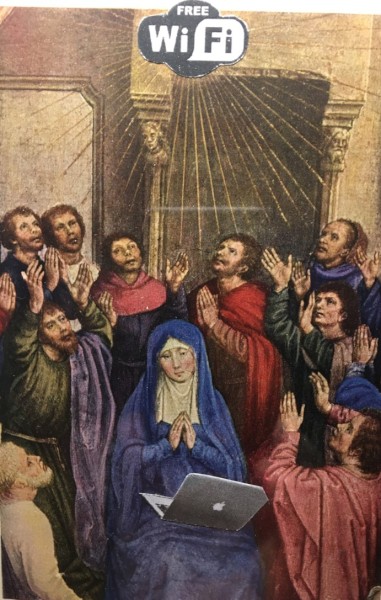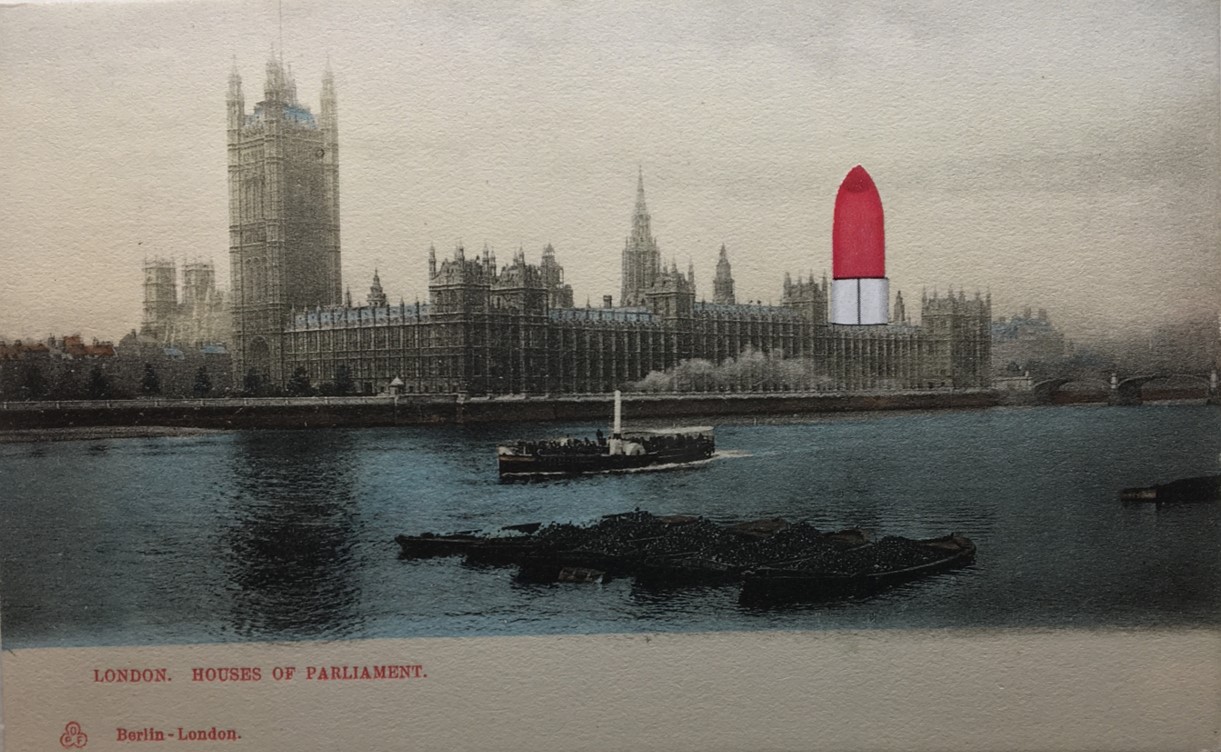In Roman Geyer’s art, upcycling means that he transforms existing, seemingly useless and pointless art into new art products by reusing and alienating the senses.
He prefers to upcycle old-fashioned paintings that no one would seriously hang on their wall in their original form today. Antiquarian postcards can be found as the basis of Roman Geyer’s works, as well as large bedroom pictures, so-called towel formats, or original etchings from the 18th century.
In the works, Geyer always establishes an anachronistic relationship between yesterday’s transfiguration and the present grotesque reality. The old-fashioned paintings are more or less conspicuously placed in an always overdrawn, new context. In the works, the ideal world cliché is strongly shaken, sometimes filled with deep black humor or provocatively caricatured garnished.
He finds the “raw material” for his works at flea markets, attics or in archives and on the Internet. Roman Geyer about his works: “I look at thousands of pictures for hours. First I roam, for example, flea markets and then take the motif with me, where in me spontaneously a grotesque image arises to it. These “grotesques” are motifs of contemporary events. And I get them exclusively from the Internet. I find there everything that occurs to me. Certain criteria, such as perspective, light and shadow play a big role in the selection. I cut these motifs out of their original digital existence, anonymize and analogize them.
Digitally not processed and printed out by normal laser printer, digital and analog world are merged in the art process. The antiquated basic motif is given a completely new content by decorating it with clear attributes of today. Both, basic motif and digital image addition, are torn from their original context and receive a completely different, now socio- and time-critical meaning. I see these works as modern ready-mades in the sense of Duchamp and as minimalist neo-Dada.”


